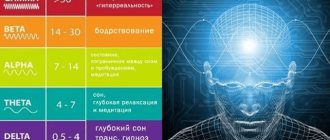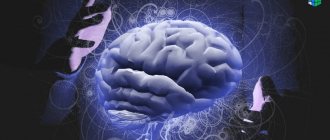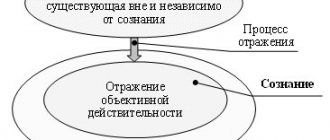Agitation is a state of pronounced emotional arousal, accompanied by a feeling of fear and anxiety, speech and motor restlessness. In a state of agitation, a person has an unconscious need to perform simple automatic movements or develops excessive fussiness.
Agitation – pronounced emotional arousal accompanied by fear
Causes
Agitation in some cases is a variant of the norm. For example, it can be triggered by a severe stressful situation - both acute and chronic.
More often, agitation is considered as one of the symptoms accompanying the following mental diseases:
- Alzheimer's disease;
- agitated depression;
- anxiety neurosis;
- catatonic schizophrenia;
- involutional depression;
- affective insanity.
The state of agitation can be provoked by the use of narcotic or psychotropic substances, or alcoholic beverages. In addition, pathology occurs against the background of severe infectious diseases.
Drugs, alcohol, psychotropic substances can lead to agitation
The mechanism of agitation development is complex and currently not fully understood. It is assumed that they play an important role:
- cerebral ischemia;
- metabolic disorders;
- influence of toxins;
- neuroreflex mechanisms;
- autoimmune and immune reactions;
- psychological characteristics of the individual.
What is agitation as an example
Photo by cottonbro: Pexels
To more clearly imagine the human condition, which is described by the term agitation, let’s simulate the situation.
Imagine that there is a certain situation that worries you greatly, and your future future depends on its successful resolution.
Well, for example, you passed a very difficult exam and are waiting for the results to be announced. Little depends on you, or rather nothing anymore. You constantly analyze your answers, and are completely unsure of their correctness.
The anxiety inside you grows, and you are no longer able to stand quietly and wait: you begin to walk randomly along the corridor, almost unconscious of your movements. The results are still not announced. Time flows endlessly. Your thoughts start to get confused.
A person passing by asks you what time it is. You do not immediately react to his appeal, and try to answer, but cannot form a sentence. You look at your watch and notice that your hands are shaking and your palms have become wet. Your heart is pounding rapidly in your chest. Anxiety inside is growing, and the imagination draws pictures of a negative outcome of events. Anxiety develops into fear, which is replaced by a feeling of emptiness and indifference. Here's the end point: you experience a state of agitation.
Agitation, agitated depression
The proposed variant of manifestation of this condition is a normal reaction to a stressful situation. In this case, the reaction of a person who is emotional and mentally very mobile was described. Of course, each of us will react to stress in our own way, but for each there is a limit of mental stress at which the described signs will appear.
Signs
It is characteristic of agitation that the patient usually does not notice this condition, despite the following pronounced signs:
- motor or speech restlessness;
- hand tremors;
- tachycardia;
- increased sweating;
- pale skin;
- rapid breathing;
- increased blood pressure;
- increase in body temperature.
During an attack, the patient cannot stay in one place for a long time. He loses the ability to reason correctly or establish complex cause-and-effect relationships.
According to medical statistics, the state of agitation is one of the main causes of traumatic injuries to medical personnel during working hours.
A person in a state of agitation experiences severe anxiety, and sometimes fear, and cannot fall asleep and calm down on his own. At the same time, attempts to control his behavior by family or friends often lead to an attack of aggression, up to and including injury to both the patient himself and those around him.
In cases where agitation occurs against the background of an illness, its symptoms are added to the signs listed above, for example, lack of criticality, delusions, hallucinations.
It is difficult for a person in a state of agitation to fall asleep
Pedantry and anxiety
Those most susceptible to the manifestation and development of pathological agitation are those in whom accentuated traits predominate: pedantic people. It is very important for them to complete the task efficiently. They are sensitive to the accuracy of the work they have created, and if the slightest inaccuracies or inconsistencies arise, they react painfully and emotionally.
This provokes a constant state of anxiety and disrupts psychological balance. As a result, there is a high probability of a traumatic event. Anxious, pedantic people question their actions, decisions, and thoughts. They tend to underestimate their abilities and feel insecure in any non-standard situations.
Among the factors that can complicate and give rise to agitated psychosis, in this case, are usually called:
- difficulties with self-realization;
- problems in relationships with other people;
Photo by cottonbro: Pexels
- stressful situations leading to a rethinking of life values and prospects;
- financial instability;
- excessive criticism from loved ones or work colleagues.
Diagnostics
Only a psychiatrist can diagnose the state of agitation after observing the patient for some time. Only by taking into account all the features can a specialist make a differential diagnosis between agitation and akathisia. In its manifestations, akathisia has much in common with agitation, but the treatment of these conditions requires a different approach.
More often, agitation is considered as one of the symptoms accompanying mental illness.
To determine the reasons that led to the occurrence of agitation, a laboratory and instrumental examination is carried out, including:
- blood test for thyroid hormone levels;
- blood test for alcohol content;
- general blood and urine analysis;
- blood pressure measurement;
- magnetic resonance or computed tomography of the brain;
- electroencephalography.
If necessary, other diagnostic methods can be used.
MRI of the brain reveals the causes of agitation
Stages of development
There are three stages in the development of anxiety and depression. The first stage is characterized by increased sensitivity to life situations, events and stress. The patient reacts with irritation to minor failures. Anxiety in the first stage is mild, and panic attacks do not occur. The patient becomes tired after normal, previously non-stressful activities and housework. Sleep problems and difficulty falling asleep are already present.
In the second stage, psychosomatic symptoms and physical complaints intensify. Pain syndrome occurs in the muscular, abdominal and thoracic areas. At the same time, there is no physical explanation for the pain. Libido is altered - it is either too low or absent. The patient also complains of dizziness, rapid heartbeat and tachycardia. Anxiety increases and panic attacks occur periodically.
In the third stage, the symptoms of the previous stages worsen. Anxiety rises quickly. Personality changes occur, problems with self-esteem and devaluation arise. Apathy appears, mood becomes chronically low.
Symptoms of agitation are revealed at three specific stages of this pathology
Treatment
Therapy for agitation should be aimed at eliminating the cause that caused its development. If this is a stressful situation, the use of tranquilizers is indicated. If agitation occurs as a result of the disease, it is treated.
Drug correction of agitation is carried out only as prescribed by a doctor and under his supervision. For this purpose, antipsychotics, antidepressants, and antianxiolytics can be used.
Antidepressants, antipsychotics, antianxiolytics and psychotherapy are the basis for the treatment of agitation
Psychotherapy plays an important role in eliminating agitation. It allows the patient to develop resistance to stressful situations, nervous and physical fatigue.
List of tranquilizer drugs
In the international Anatomical Therapeutic Chemical Classification (ATC), adopted by the Ministry of Health of the Russian Federation in 2002, anxiolytics (N05B) are included in the subsection of the section Drugs for the treatment of diseases of the nervous system (N) - Psycholeptics (N05). This subsection includes six groups of tranquilizers:
- benzodiazepine derivatives (N05BA): Chlordiazepoxide, Medazepam, Oxazepam, Potassium clorazepate, Lorazepam, Adinazolam, Bromazepam, Clobazam, Ketazolam, Prazepam, Alprazolam, Galazepam, Pinazepam, Camazepam. Nordazepam, Fludiazepam, Ethyl loflazepate, Etizolam, Clotiazepam, Cloxazolam, Tofisopam, Lorazepam in combination with other drugs;
- diphenylmethane derivatives (N05BB): Hydroxyzine, Captodiam, Hydroxyzine in combination with other drugs;
- carbamates (N05BC): Meprobamate, Emilkamate, Mebutamate, Meprobamate in combination with other drugs;
- dibenzo-bicyclo-octadiene derivatives (N05BD): Benzoctamine;
- Azaspirodecanedione derivatives (N05BE): Buspirone;
- other anxiolytics (N05BX): Mefenoxalone, Gedocarnil, Etifoxine, Fabomotizol.
Below we present two lists of tranquilizers that can be prescribed for neuroses and neurosis-like mental disorders based on elements of the leading symptoms.
Rice. 1. Formula of the first tranquilizer.
Target - elements of agitation
Mild and borderline mental disorders may be accompanied by elements of agitation: anxiety, panic, fear, overvalued thoughts of fear, obsessive fears, irritability, dysphoria, difficulty going to bed, decreased sleep duration, vegetative lability, vegetative crises. Elements of agitation are the target of the following tranquilizers:
- Diazepam;
- Alprolasam;
- Phenazepam;
- Lorazepam;
- Clonazepam;
- Flurazepam;
- Medazepam;
- Oxazepam;
- Triazolam;
- Bratizolam;
- Tetrazepam;
- Clobazam;
- Gidazepam;
- Nitrazepam;
- Flunitrazepam.
Target - elements of asthenia
Elements of agitation in reversible mental disorders include: mental and physical asthenia, chronic fatigue syndrome, hypochondria, impaired attention and memory, decreased intellectual activity, weakness, fatigue, lethargy, apathy, exhaustion, irritable weakness, autonomic lability, lack of vigor after sleep, anxiety . If such symptoms are present, the following tranquilizers are effective:
- Adaptol;
- Noofen;
- Trioxazine;
- Tofisopam;
- Buspirone.
The choice of a particular tranquilizer depends on the therapeutic goals, the nature of the disease and the individual characteristics of the patient’s health condition. The same applies to the dosage and timing of taking drugs in this group. Refusal of the doctor’s recommendations for taking an anxiolytic (frequency of dosage, recommended dosage, timing of treatment) is unacceptable.
Prevention
Prevention of agitation is the treatment of mental illness. Mentally healthy people need to avoid stressful situations and stop using alcohol and drugs. It is important that a patient prone to agitation receives regular psychotherapeutic support. The skills to cope with stress acquired during this course reduce the risk of relapse of the pathology.
Agitation in some cases is a variant of the norm. For example, it can be triggered by a severe stressful situation - both acute and chronic.
Agitated depression
We figured out what agitation means. Let's move on to consider the concept that is often used together with the first one - agitated depression.
Agitated depression is an atypical form of depression. It combines periods of melancholy and increased excitability and activity. Melancholy is associated with the past (nostalgia, regrets about losses), and the period of excitement and anxiety is associated with the future (“what if I can’t fix anything, I won’t become happy, I won’t find a job, I won’t build a family, I’ll lose even more”). The unknown is what frightens and worries a person with anxious depression.
Symptoms
In everyday life, people call it “driven” or “despondent”, attribute it to fatigue and temporary difficulties, and think that everything will go away on its own. If we are talking specifically about depression, then it will not go away on its own, you need to see a psychotherapist. And the sooner the better. Therefore, it is useful to know the first symptoms of agitated depression.
The main symptom is the alternation of phases of despondency, indifference and apathy with periods of excitement and anxiety. Each of them has its own symptoms.
Period of apathy:
- yearning;
- asthenia;
- sleep problems;
- change in appetite (increases or disappears);
- fast fatiguability;
- isolation and reluctance to communicate.
Excitation stage:
- increased motor and speech activity;
- numerous fears and anxieties associated with the future;
- obsessive thoughts about the future, health, work, personal life;
- repetition of the same words, phrases;
- a pessimistic vision of the world, a feeling of hopelessness and doom.
The periods last on average two weeks.
Causes
Middle-aged and older people are at risk. Depression manifests itself at the time of a midlife crisis or at the time of an existential crisis. The latter can happen at any age. At this moment, a person evaluates the path traveled, compares dreams from the past and the picture of the present. If a person realizes that he has not achieved what he wanted, or has wasted his life on something insignificant, the likelihood of developing agitated depression increases.
So, we can name the following reasons for the development of anxious depression:
- disappointment in oneself, life;
- lack of guidelines, plans, goals and meaning in life;
- financial instability;
- problems in personal life;
- difficulties in the field of employment;
- social pressure, criticism;
- self-blame because friends have achieved more;
- middle age crisis;
- existential crisis.
The older the person, the higher the risks. For example, if a crisis occurs at the age of 25, then a person will be able to convince himself that everything is still ahead, that there is still strength, health and time. People aged 40–50 and single people are at risk.
Treatment
First you need to conduct a professional diagnosis. During the conversation, the psychotherapist collects anamnesis and draws up a portrait of the patient. If he suspects the presence of agitated depression, he prescribes tests to confirm the diagnosis (to identify anxiety, depression and general condition). Treatment is selected individually, depending on the characteristics of the patient and the stage of development of depression:
- Mild degree. Herbal sedatives are prescribed and psychotherapy sessions are conducted.
- Moderate severity. They prescribe more serious medications and conduct psychotherapy.
- Serious condition. Antidepressants and tranquilizers are prescribed and psychotherapy is carried out.
A person with anxious depression views himself as a failure and the world as the enemy. The goal of psychotherapy is to change the destructive attitudes of the individual, reveal a person’s potential, and restore faith in oneself. At first, psychotherapy sessions are carried out twice a week; at the maintenance stage, the patient comes to the psychotherapist once every two weeks.
Psychotherapy is the main method of treatment. Medicines are auxiliary. Self-medication is not recommended. Antidepressants and tranquilizers are available by prescription and have many side effects and contraindications. With comprehensive and proper treatment, the prognosis is favorable at any stage of agitated depression.









